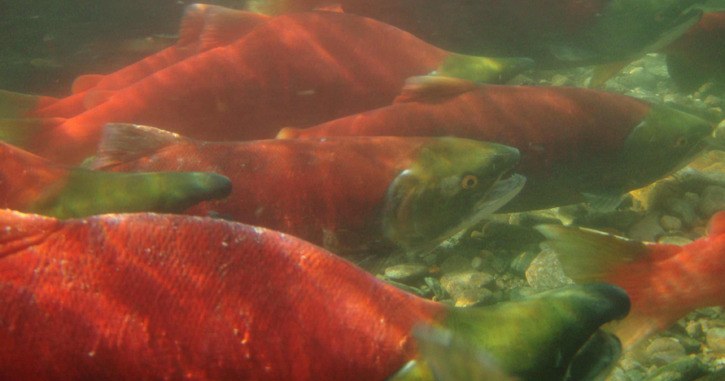A low sockeye salmon return year is coming in even lower than forecast, with no commercial or recreational sockeye fisheries on the Fraser and marine areas and only aboriginal fisheries permitted by Canadian and U.S. authorities.
The Pacific Salmon Commission met again Tuesday, and downgraded the main summer run estimate to 700,000 fish.
Test fishing catches have been tracking below forecast for what was expected to be a low-return year on the four-year sockeye cycle, with the Early Stuart and other runs below expectations. The main summer run was calculated at 992,000 on last week’s test fishing data, down from a pre-season forecast of 1.67 million.
As of Aug. 8, the Fraser River water discharge at Hope was 24 per cent lower than the average for that date, with the temperature at 19.0C, up 1.0C from the average. Those conditions are considered satisfactory for salmon migration.
Fisheries and Oceans Canada has begun its spawning escapement assessment programs.
“Early Stuart sockeye are in the early stages of spawning and are reported to be in good condition,” the commission says. “There has been steady migration of Chilliwack sockeye into the river and the observed fish are also reported to be in good condition.”
Aboriginal food, social and ceremonial fisheries on the Fraser and Canadian marine areas have taken 40,800 sockeye, with no commercial take for aboriginal fisheries. U.S. aboriginal treaty fisheries have taken 900 fish.
Federal Fisheries Minister Dominic LeBlanc said Tuesday he is continuing to implement the Cohen Commission, established to study the collapse of the 2009 sockeye run. The 2010 run came in with a record 30 million fish, but the Justice Bruce Cohen’s commission reported a general decline in sockeye runs since 1990 from Washington state up the Central Coast, Skeena, Nass and up to Yukon’s Klukshu and Alaska’s Alsek Rivers.
This year the Pacific Salmon Commission noted the effects of a warm North Pacific area called “the blob,” which affected marine food before it dissipated early this year.
